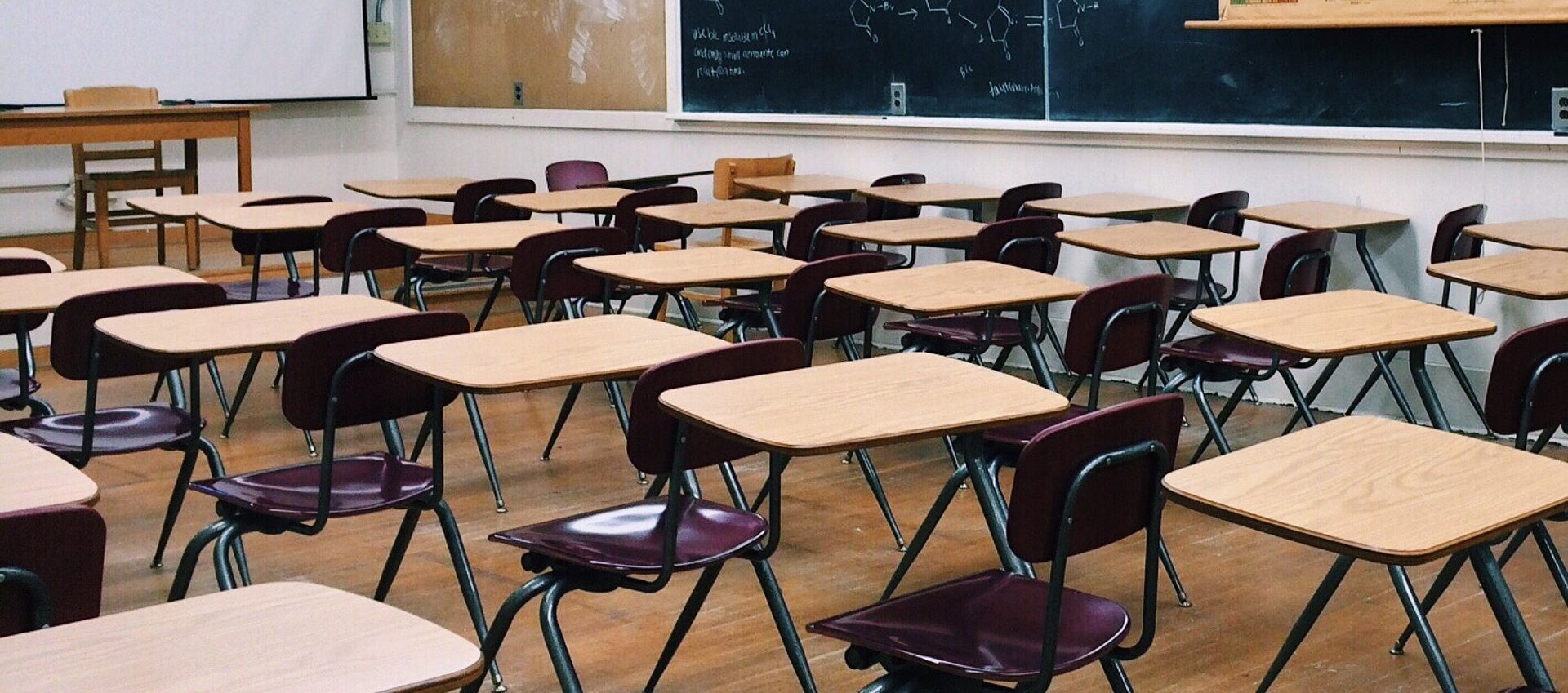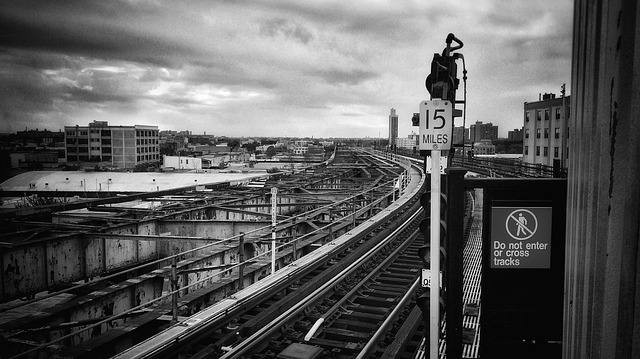For Back to School Night, my principal requested an extra police officer on campus and asked all administrators to take 15-minute shifts in my classroom to ensure I was never left alone with the parents. The tension was incredible. Threats of violence and death pervaded my thoughts instead of my anticipated “Welcome to my Classroom” presentation I planned on giving for the 18th year in a row. For days prior, my school received death threats and phone calls demanding my immediate termination. I never received exact details as the administration tried to protect me, but the heightened vigilance regarding my safety smacked of the 1960s.
In the fall of 2016, I was teaching a Senior Literature and Composition class focused on social justice. Within my 21 years of teaching, I have periodically used Peggy McIntosh’s “White Privilege: Unpacking the Invisible Knapsack” in my American Literature classes. It had been a few years, but with the onslaught of questions from my non-Latinx, non-Muslim and non-LGBTQ students, there was a lot of confusion about why there was so much tension between those who had grown up together in the district. White students wanted to know why their friends of color were being so “sensitive” all of a sudden, not taking jokes anymore. They wanted to know why their friends of color were so worried about Trump becoming president. Latinx students inquired about why white students thought chanting “Build the Wall” in the halls and at lunch was considered funny when it hurt them, and they felt their friends becoming strangers. This was particularly difficult to digest as just the semester before, a third of the student body walked out in support of the protest happening at a neighboring high school that had displayed a “Build the Wall” banner. Female students were growing more disgusted with the brutish behavior some male students were boldly exhibiting and wanted to know why there was a shift. Muslim students who wore hijabs questioned how the school was going to protect them.
It became apparent that it wasn’t just white privilege students needed awareness of; they also needed to know where they stood within religious, citizenship and sexuality privilege and how their positions of privilege and non-privilege came to be. I sought to address these gnawing issues that isolated students from each other. My classroom was dividing between U.S. citizens and immigrants (documented or not), whites and blacks, Christian and Muslim, male and female. There were students who understood that racial, sexual and religious freedoms were at stake with the Trump/Pence election, while others were clueless or couldn’t care less. Nonetheless, everyone was facing a different kind of America than the one they thought they were growing up in, one full of rage they failed to notice until it was right in their face. This shift was happening, and it had to be addressed.
I needed to foster a nurturing learning environment for all my students, so I focused on perspective. How could my students understand each other, accept and advocate for each other, if they were not connected and informed about one another’s different experiences? Beginning with McIntosh’s white privilege survey, I scoured the internet for similar surveys for gender, religion, sexual orientation, class, ableism, and citizenship. I was not disappointed. I found many variations of McIntosh’s survey, so I developed a lesson examining each privilege, using clips from YouTube to vary the content and ensure people from each population were represented, so the kids could match faces with information and to humanize each population as much as possible. I needed the students to know all of the stories we would read were past and present struggles, but they could help prevent those struggles from manifesting in the future. As seniors, they were on the cusp of adulthood, soon to be heard through their votes and hopefully other activism. Some slides allowed for check-ins with their discomfort, enabling me to reassure them that discomfort is natural and there is a way to find comfort within discomfort.
This whole lesson was to be an empowerment for students, to help them realize they could be knowledgeably active rather than ignorantly passive and apathetic about political and social issues in the world. I was excited for all the questions and discussions we would have. I looked forward to the self-reflections they were required to write for each survey after they determined how much privilege they did or did not possess. We would be able to read stories from various points of privilege and marginalization with compassion for the characters’ struggles, as well as find parallels in our own.
Unfortunately, one parent misinterpreted my lessons and went straight to the local press. Rather than contact me, my principal, or my superintendent directly, he told the press, “I think [my son] should be learning actual education and not be a part of some social experiment or some teacher’s political agenda. . . With the amount of money we pay for schools, they should be educating not indoctrinating our students about the latest political fad or political agenda a teacher wants to get across.” It crushed my heart to hear of this reaction. Never would I have thought of myself as indoctrinating students. There are various questions that accompany this work, with a lot of time given for students to question themselves, each other, me, and, later, friends and family. This is the very opposite of indoctrination, as my method does not allow students to sit, listen and accept. I stress the importance of questions that bring about more questions and the quest to find answers that help students navigate their world.
I pride myself on the relationships I build in class so that I can be at ease among my students when they’re uncomfortable, knowing in time we can find a way to create a sense of empowerment. While this parent felt I was a “flaming liberal,” brainwashing students to feel bad about being white, other parents stepped up to defend my lesson, with one parent stating, “I want [my daughter] to have opinions. Whether it’s for or against, you have to create those, but you can’t without good information[,] so I applaud teachers getting out that information.”
In the past, I have received gratitude from students and parents for teaching a lesson many teachers are too uncomfortable to teach. It is a rare lesson, based on teachers who know they will be dealing with tears and fears from students and parents alike. Communication mends the gap, making a bridge that could be burned if the teacher and the complainant fail to be brave enough to discuss within thick discomfort, assured that we are safe from violence to discuss differences in thoughts.
In some cases, students have requested to be excused from the lesson and some parents have demanded class transfers, meaning I couldn’t follow through with the lesson. But 2016 was unlike any year of teaching the privilege unit I have ever experienced. Even a white teacher who had given the survey before questioned why I was the one receiving negative attention while she hadn’t, underscoring the privilege white teachers have to teach sensitive materials without being seen as threatening.
Once the father went to the press, the story became a wildfire spreading across my state, the country, Canada, and the United Kingdom. The stories kept coming from both liberal and conservative news sources. Admittedly, I was fascinated because I was learning my own lesson on how the press handles a story. How did my name stay out of the media? How did they find students to interview? How will this affect my employment and future endeavors? If my name is revealed, will I be safe from harm?
I really should have only read the articles, but my morbid curiosity pushed me to venture to the comment sections. That was a mistake. While there were plenty of positive, supportive, grateful remarks, the comments that demanded my termination and suggested I be strung up by a tree caused me great alarm. Never did I think my profession could lead to violence towards me or my family if someone tried to find where I live. Thoughts of burning crosses, night raids with rocks thrown through my windows, injury to my black son all haunted me. But I kept reading. I needed to know what possible danger there was. Stories of American survivors of injustice over hundreds of years in memoirs, autobiographies, journals, and news articles flooded my mind as I bought security cameras and filled my purse with pepper spray, just in case. I became cautious to the point of paranoia. Every word, I watched. Every lesson I created, I reviewed it too many times over. I partially wished I hadn’t taught the lesson. Too much was happening in my life to face possible threats and surveillance from all sides.
Now, instead of being knowledgeable about protecting myself as a woman and a person of color, I had another layer of concern, all because of privilege surveys in my classroom: living while being labeled an activist. One thing I did grasp was that I had lived in a bubble of false freedom for quite a long time. However, having parents come up to me at Back to School Night and whisper their thanks for the material I was teaching kept me strong. Some said they prayed for my safety as they worried about how ugly this could become. Other parents shared how their dinner conversations had shifted, as all family members had a chance to learn something from their children. My students had become teachers, guiding discussions of privilege in their own homes and with their friends.
After the principal and superintendent confirmed their support of me moving forward, despite the country-wide phone calls of anger and threats, I continued. Three students were removed from my classes. Sadly, I was relieved for myself, but disappointed they missed an opportunity to learn uncomfortable lessons and connect with their peers, a student body that is 55% students of color. The students who stayed read Walt Whitman’s poem, “I Hear America Sing” and saw in it the erasure of people of color’s contributions to this country.
Uncomfortable lessons helped students further understand why Langston Hughes had to write “I, too” to stand up to Whitman for trampling on African Americans’ history and dignity after generations of hard labor and contributions, which Whitman completely disregarded in his tribute to the nation. The students who stayed also saw Julia Alvarez reminding Whitman about sorely ignored Latinx contributions. Eventually, we did move forward to learn new points of view that we both agreed and disagreed with, concluding that all people have protected rights, no matter how someone lives, no matter our personal opinions. That, in itself, was a lesson.
Works Cited
Kellee Azar, KATU News. “White Privilege Survey Given To High School Seniors In Aloha”. KATU, 2018, http://katu.com/news/local/white-privilege-survey-given-to-students-in-aloha. Accessed 29 June 2018.
Rudolph, Dana. “National SEED Project – White Privilege: Unpacking the Invisible Knapsack”. Nationalseedproject.Org, 2018, https://nationalseedproject.org/white-privilege-unpacking-the-invisible-knapsack. Accessed 17 June 2018.
Katherine Watkins is a black, white and Native American writer who has loved writing ever since elementary school. She taught high school English for 21 years and is beginning as a middle school Humanities teacher this fall. Currently completing her second Master's degree in Creative Writing Nonfiction, she hopes to teach at the local community college.



2 responses to “Gone Awry”
Well done Katherine! Have a great year this year!
Thank you! I’ve been transferred to a new school which seems really cool! Not as diverse, but many kids who need encouragement to explore who they are. I’ll miss my babies, but at least they have my email address if they need me!